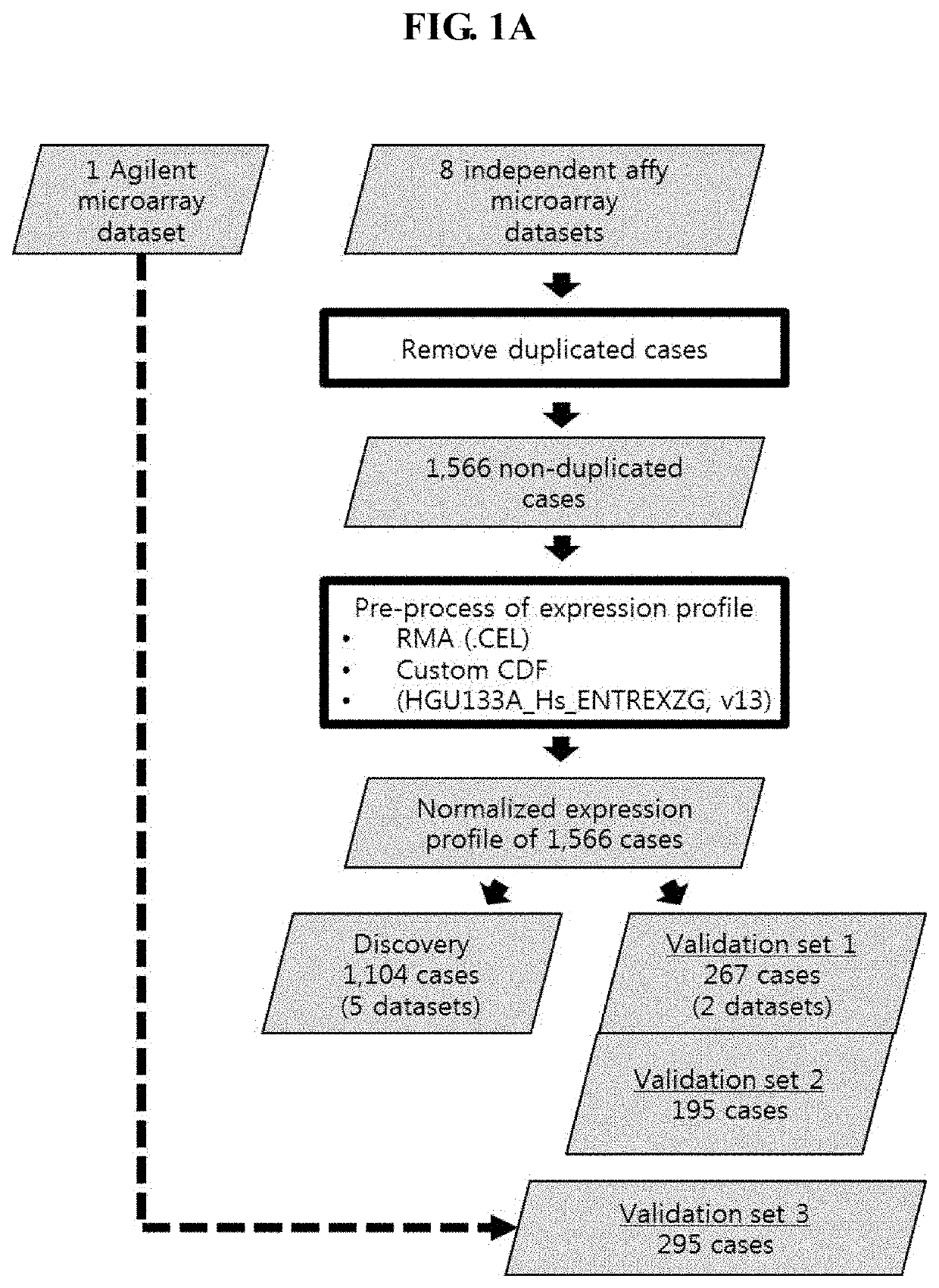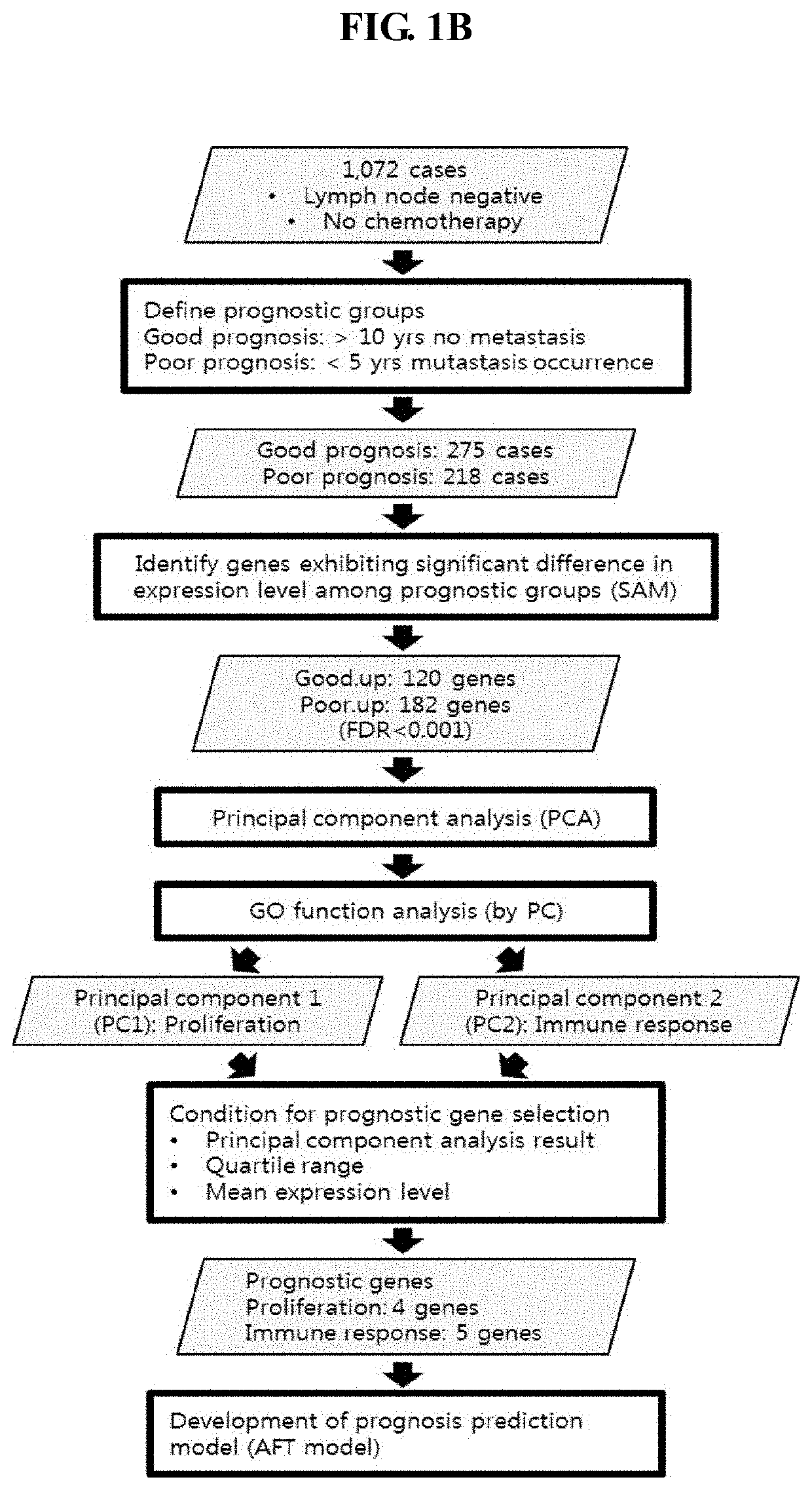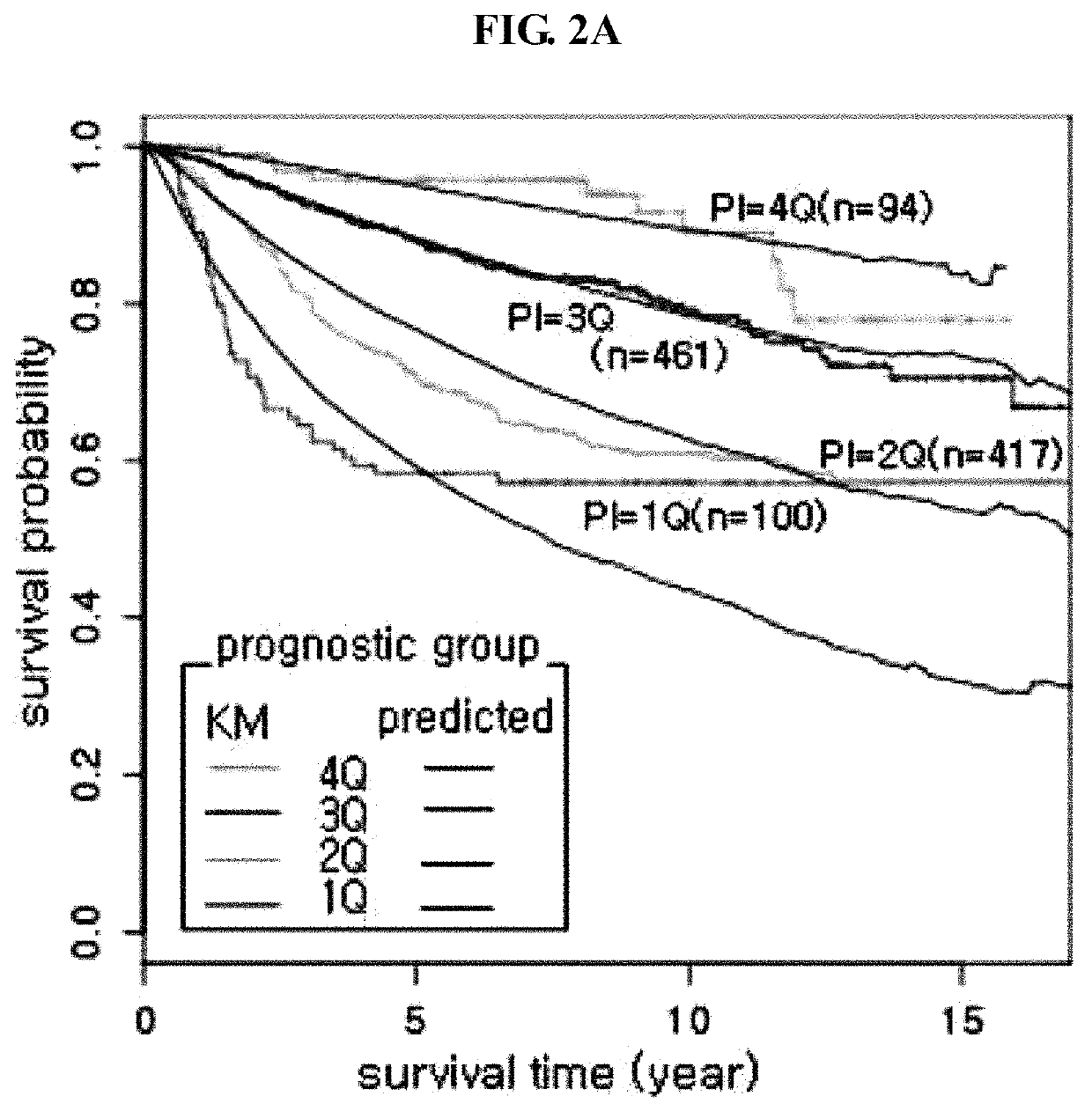Genetic marker for early breast cancer prognosis prediction and diagnosis, and use thereof
a gene and early-stage breast cancer technology, applied in the field of gene for early-stage breast cancer prognosis prediction and diagnosis, can solve the problems of difficult to perform for researchers, inability to favorably utilize methods, and explosive increase of related information
- Summary
- Abstract
- Description
- Claims
- Application Information
AI Technical Summary
Benefits of technology
Problems solved by technology
Method used
Image
Examples
Embodiment Construction
[0058]The present invention will be described in more detail.
[0059]The present invention provides a genetic marker for predicting or diagnosing the prognosis of a breast cancer patient and a use thereof. More specifically, the present invention provides a genetic marker of T cell receptor beta constant 1 (TRBC1), butyrophilin, subfamily 3, member A2 (BTN3A2), or major histocompatibility complex, class II, DP alpha 1 (HLA-DPA1), for predicting or diagnosing the prognosis of breast cancer, especially, early-stage breast cancer. In addition, the present invention provides a method for predicting the prognosis of breast cancer, the method comprising: (a) isolating mRNA from a sample; (b) measuring the mRNA expression level of at least one gene selected from the group consisting of T cell receptor beta constant 1 (TRBC1), butyrophilin, subfamily 3, member A2 (BTN3A2), and major histocompatibility complex, class II, DP alpha 1 (HLA-DPA1); and (c) normalizing the mRNA expression level of t...
PUM
 Login to View More
Login to View More Abstract
Description
Claims
Application Information
 Login to View More
Login to View More - R&D
- Intellectual Property
- Life Sciences
- Materials
- Tech Scout
- Unparalleled Data Quality
- Higher Quality Content
- 60% Fewer Hallucinations
Browse by: Latest US Patents, China's latest patents, Technical Efficacy Thesaurus, Application Domain, Technology Topic, Popular Technical Reports.
© 2025 PatSnap. All rights reserved.Legal|Privacy policy|Modern Slavery Act Transparency Statement|Sitemap|About US| Contact US: help@patsnap.com



